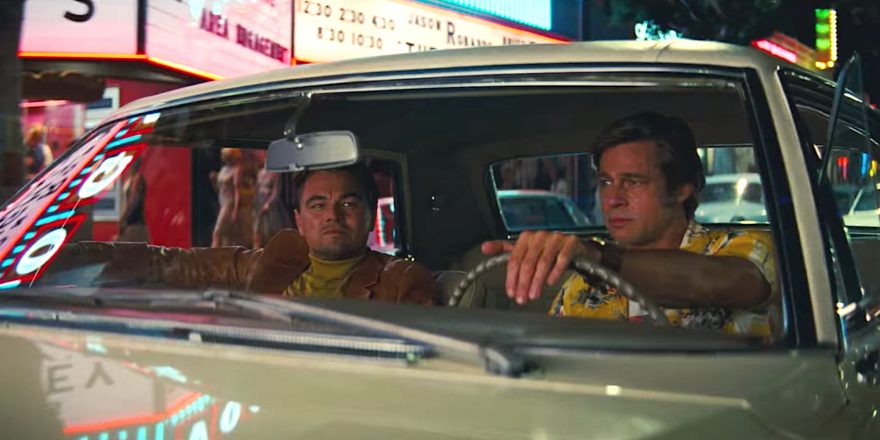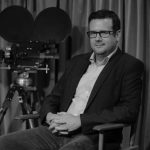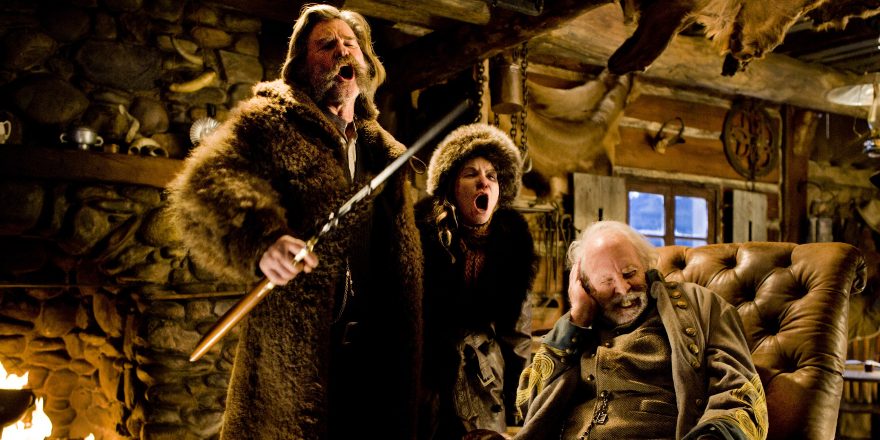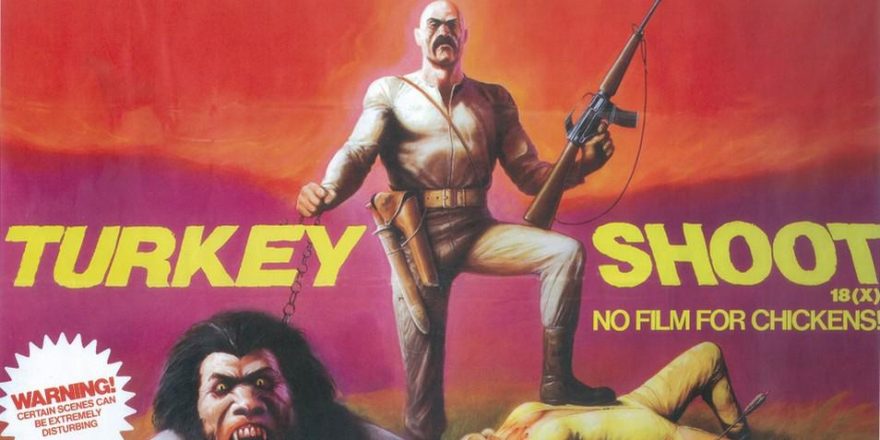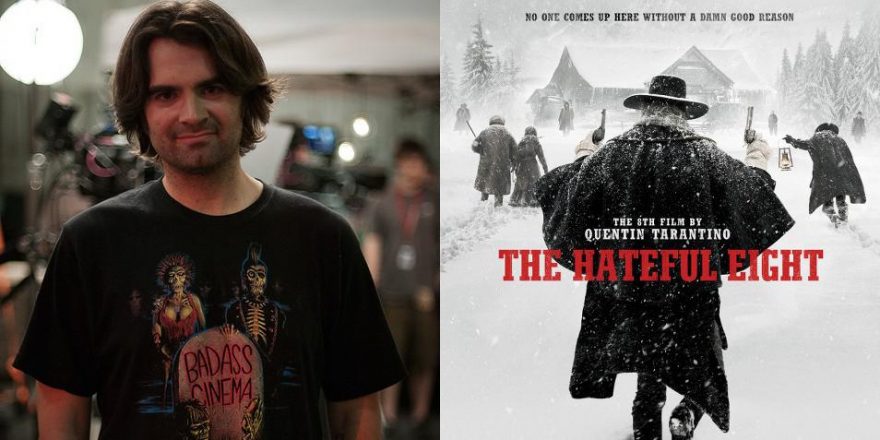Over the festive break, Talkhouse Film is revisiting some of its most read (or listened to) pieces of the year, including this one. Happy holidays! – N.D.
I’ve seen and loved a lot of movies about movies and the people who make them, but I’ve never loved one as much as I loved Once Upon a Time … in Hollywood, or seen one that gets it as right. The movie contains all of Quentin Tarantino’s usual strengths – rich characterizations and dialogue, a lively engagement with history and pop culture, unpredictable but rock solid plotting, an impeccable sense of framing and cutting – but this time the effects are subtler and looser and more emotionally engaging than ever before. With this, his ninth and best feature, Tarantino’s confidence and experience converge with the subject matter he was born to tackle, and the result is an affectionate, cathartic, and heartbreakingly beautiful masterpiece about the dream of the movies.
Superficially, the Tarantino movie Once Upon a Time … in Hollywood resembles most is Pulp Fiction; like that film it’s an L.A.-set ensemble piece divided into three sections, each of which has a compressed time frame. Set over the course of three days in 1969, the third taking place six months after the first two, its primary focus is the friendship between TV actor Rick Dalton (Leonardo DiCaprio) and his stunt double Cliff Booth (Brad Pitt). Like Steve McQueen (also a character here, played brilliantly in a brief appearance by Damian Lewis), Rick had a hit Western series in the 1950s; unlike McQueen, he never made the leap to big-screen stardom, and now he feels his career slipping away with every diminishing guest role.
Rick still has his nice house and consistent work, though, as well as an offer to cash in making Italian Westerns in Europe. As long as Rick is OK, Cliff is OK, since his fortunes are essentially tethered to Rick’s – these days he’s less Rick’s stunt double than his all-around right-hand man, and he spends an inordinate amount of time driving the freeways of Los Angeles on errands for Rick and shuttling back and forth between Rick’s house in the hills and his own trailer in the valley. The friendship between Rick and Cliff is as genuine and moving as it is imbalanced; Tarantino and his actors perfectly capture a kind of dynamic that I’ve seen many times in life but never on screen, that between two friends who love each other deeply while implicitly understanding the impossibility of true equality when one depends on the other for his livelihood.
It’s a remarkably multifaceted relationship made all the more powerful by the casual quality with which Tarantino, DiCaprio and Pitt render it – these guys are so much fun just to hang out with that the poignancy of their friendship really sneaks up on you. The same goes for the storyline involving the third key character in the movie, Rick’s new next door neighbor, Sharon Tate (Margot Robbie). One of several real-life figures Tarantino weaves in and out of the fictional Rick and Cliff’s stories, the effervescent Sharon lives at the top of the Hollywood class system that Once Upon a Time dissects; she and her husband Roman Polanski are living the dream that Rick has come tantalizingly close to without ever truly achieving, and which Cliff has only seen at a remove.
One of the greatest joys of Once Upon a Time … in Hollywood is Tarantino’s infectious fondness for all three of these characters and the delight he takes in their delight at being part of the entertainment industry. When Sharon sits in a Westwood movie theatre watching her performance in The Wrecking Crew with a laughing audience, or Rick nails a scene in a Western episode he’s guest starring on, or Cliff wistfully references his glory days as a stuntman, it’s impossible not to share their pleasure and pride – and it’s impossible not to be wowed by Tarantino’s achievement in so perfectly capturing the spell the movies cast on those who make them. The rewards of that life for Rick and Sharon are a little more obvious, but even Cliff, who has worked for decades in the business with no security and no reliable future, gets off on the giddy thrill of proximity to Hollywood’s magic factories – whether or not those factories are creating classics like The Great Escape and Rosemary’s Baby or any one of thousands of forgettable, interchangeable TV episodes.
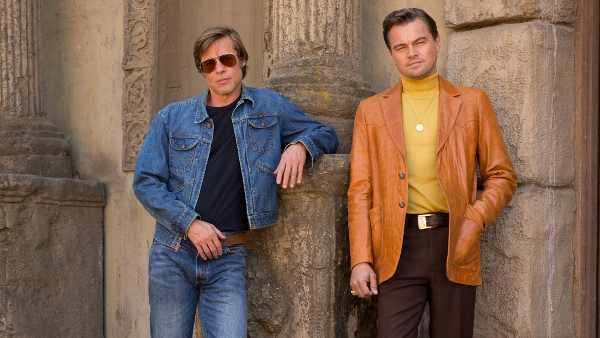
Given Tarantino’s exalted position as one of the few auteurs in Hollywood who gets to make whatever he wants on a major scale, I was surprised by his profound understanding of and affection for the filmmakers and actors banging out those TV episodes. He devotes a considerable amount of Once Upon a Time … in Hollywood’s 161-minute running time to scenes depicting Rick’s process, scenes that beautifully illustrate the satisfactions working actors and directors can find in simply getting it right – and the horror and humiliation of getting it wrong. Tarantino is also great at capturing the ways in which everyone in Hollywood clings to hope – often false hope – to keep going; when Rick notes that by living next to Sharon and Roman he’s just one cocktail party away from getting cast in a big movie, it’s a funny moment, but it’s touching, too. The movie also gets some big laughs thanks to its accuracy in noting the resentments people in Hollywood nurture regardless of their status – everyone in the city, even Steve McQueen, is jealous of someone else.
Tarantino has always been a writer-director who loves his characters, but in Once Upon a Time … in Hollywood he loves them with a newfound purity and depth and clarity – although the film is chock full of references to music, TV and other movies, the references are more organic and less self-conscious than they were in early Tarantino movies like Reservoir Dogs and Pulp Fiction. There’s no ironic barrier between the audience and the characters; the connection is as immediate and as honest as anything you would find in the work of Hal Ashby or Paul Mazursky. The amazing thing is that Tarantino provides this direct line between us and his people without sacrificing his conceptual and formal inventiveness; Once Upon a Time … in Hollywood is every bit as audacious as the director’s earlier work, but the narrative flourishes are so perfectly integrated with the film’s themes and milieu that they don’t feel like flourishes – the movie’s as unadorned and unaffected as the best of Tarantino’s beloved Howard Hawks.
Fans of Tarantino’s radical shifts in tone and genre will not be disappointed here, but the shifts feel more natural than before – thanks to Fred Raskin’s expert editing, you don’t even notice how ingenious some of them are until well after you’ve left the theater. The movie as a whole shares a lot in common with Cliff – like him, it gives off an air of relaxed, good-natured charm that belies the complexity underneath the surface. The film is a supreme feat of orchestration on Tarantino’s part, a movie of epic scale and intimate pleasures with a cast so varied and extensive that merely listing the great actors in the film would use up virtually all of my word count here. But it never feels overstuffed or exhausting – this movie gives the audience more rewards for less effort than virtually anything I’ve ever seen. It’s the most generous Tarantino has ever been toward his characters, his audience, and his collaborators, all of whom shine here. I never thought I would sum up a Tarantino movie by describing it as “sweet,” but that’s what this is – a lovely ode to a lost time and lost people who nevertheless reveal through their idiosyncrasies and desires that maybe Hollywood hasn’t changed that much after all.



